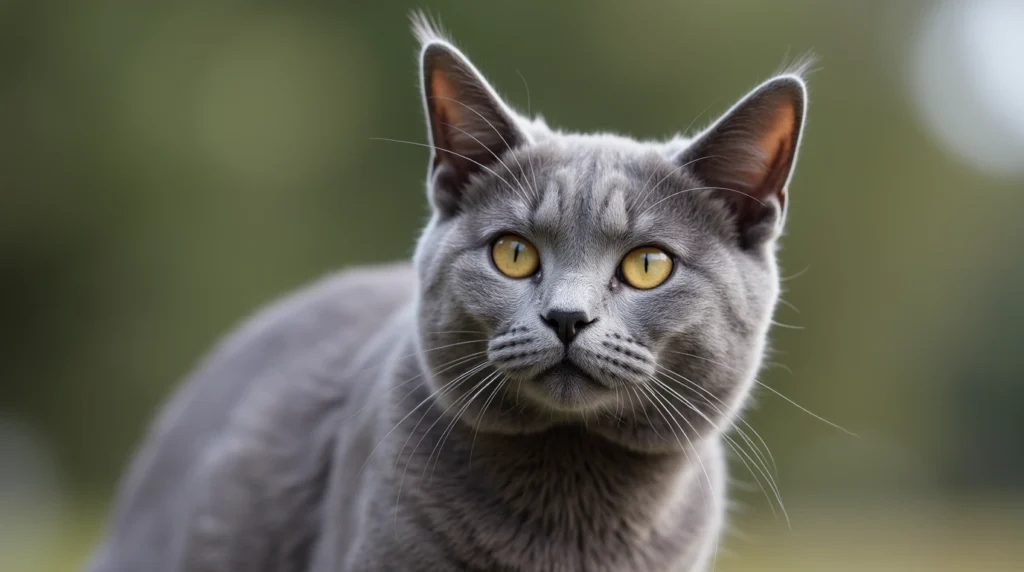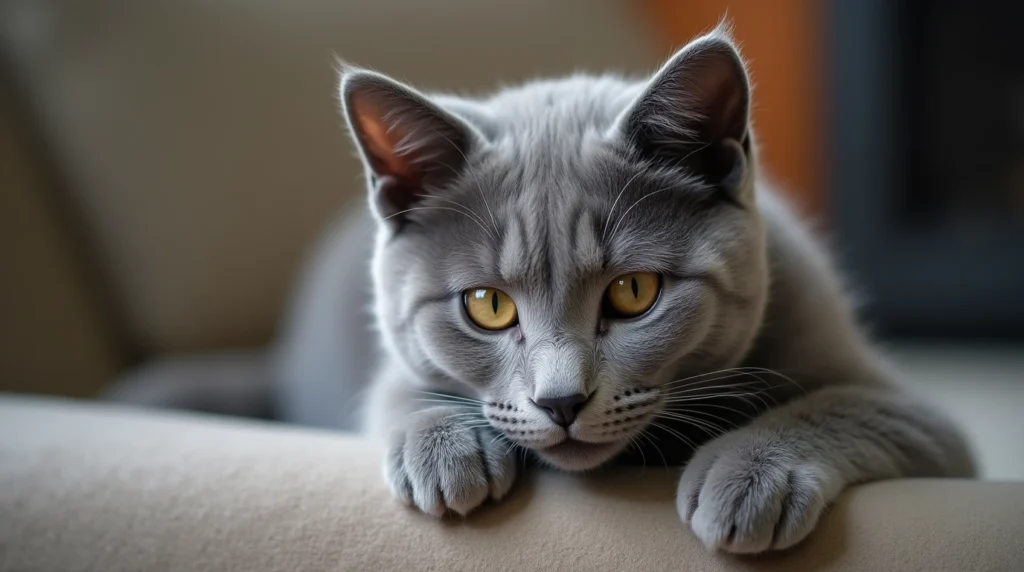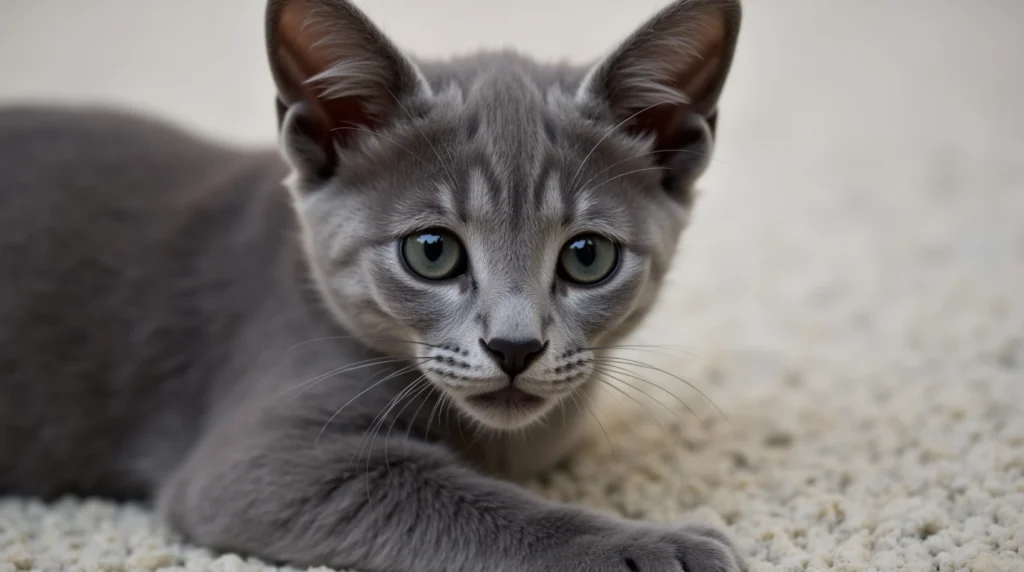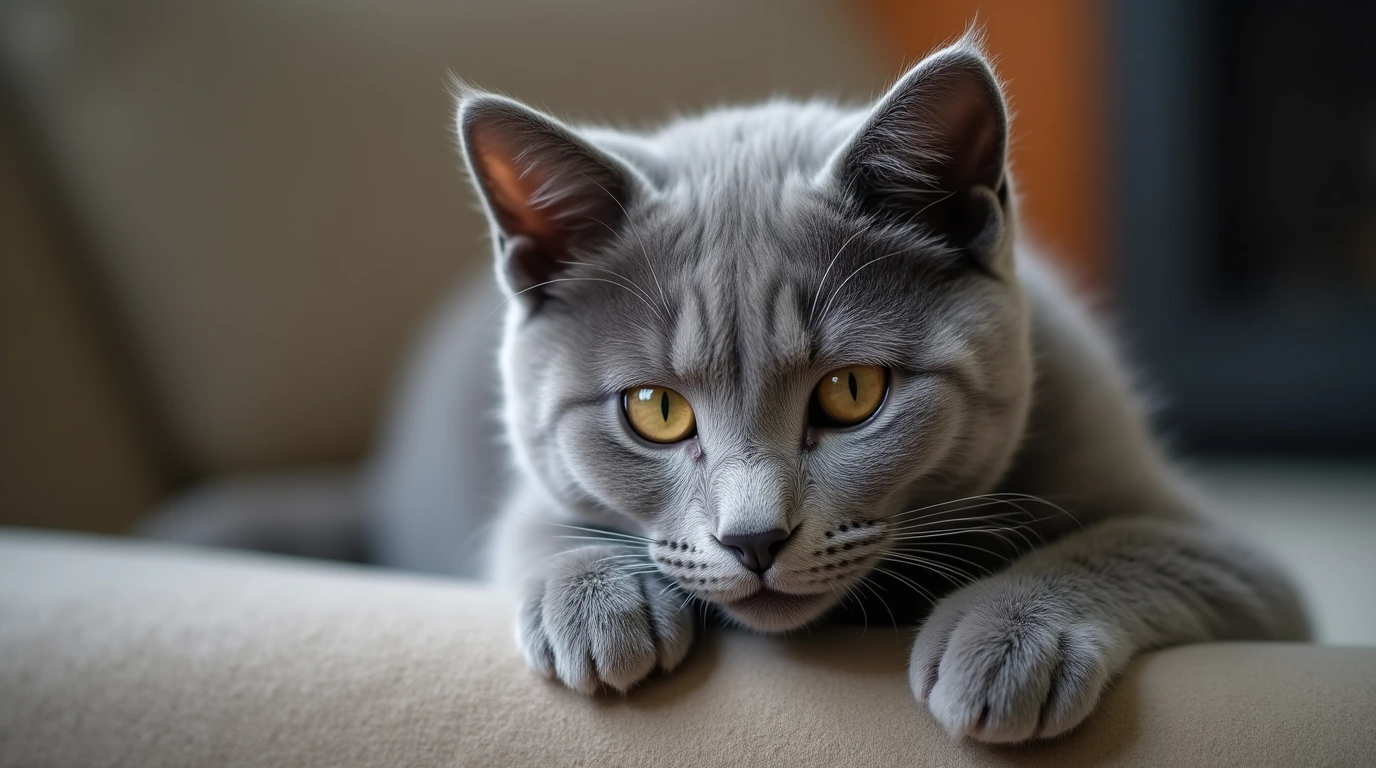If you’re considering adopting a new feline companion or are simply drawn to the elegant charm of grey cats, you’re not alone. Grey cats have an undeniable allure. Their sleek coats and stunning eyes make them incredibly captivating, and they come in a variety of breeds, each with its own unique personality and characteristics. Whether you’re an experienced cat owner or a first-time adopter, understanding the different grey cat breeds can help you find the perfect match for your home.
In this comprehensive guide, we’ll introduce you to eight gorgeous grey cat breeds, from the regal Russian Blue to the charming British Shorthair. We’ll explore their distinct personalities, care requirements, and what makes them so special. By the end of this article, you’ll have all the information you need to choose the best grey cat breed for your lifestyle.
Table of Contents
1. Russian Blue – A Royal Companion
The Russian Blue is often considered the epitome of grace and sophistication. With their stunning silver-blue coats and striking green eyes, it’s easy to see why they are a favorite among cat lovers. This breed is not just about looks; they are also known for their loyal, intelligent, and somewhat reserved nature.

Key Features of the Russian Blue:
- Appearance: The Russian Blue has a plush, short coat with a silvery blue hue, giving it a soft and velvety texture. Their vivid green eyes add to their regal look.
- Temperament: Russian Blues are known for being intelligent and independent. They form strong bonds with their owners but can be aloof with strangers. They enjoy interactive play and mental stimulation.
- Care Requirements: Due to their short coat, Russian Blues require minimal grooming. However, they do benefit from regular brushing to maintain the coat’s luster and remove loose hairs. They are generally healthy cats, but they are prone to urinary issues, so a balanced diet is important.
Perfect for:
Russian Blues make excellent pets for individuals or families looking for a quiet, independent cat. They thrive in calm environments and are well-suited for apartment living.
2. British Shorthair – The Calm and Cuddly Grey Giant
British Shorthairs are known for their distinctive round faces, large eyes, and robust bodies. This breed has a gentle, laid-back temperament, making them ideal companions for a variety of households. British Shorthairs are especially popular for their easygoing nature and affectionate personalities.
Key Features of the British Shorthair:
- Appearance: British Shorthairs have a round face, short dense coat, and large, expressive eyes. Their thick coat comes in various colors, with grey being one of the most popular.
- Temperament: British Shorthairs are friendly and affectionate but not overly demanding. They enjoy spending time with their owners but are content being alone for extended periods.
- Care Requirements: Their short coat is low-maintenance and does not require extensive grooming. However, they do shed moderately, so regular brushing is advised. British Shorthairs are typically healthy but can be prone to obesity, so it’s important to monitor their diet.
Perfect for:
This breed is perfect for people who want a calm, cuddly cat that doesn’t require constant attention. British Shorthairs adapt well to a variety of living situations, including families with children or other pets.
3. Chartreux – A French Beauty with an Old Soul
The Chartreux is a lesser-known breed with a rich history. Originating in France, the Chartreux is celebrated for its silvery-blue coat, amber eyes, and playful yet calm demeanor. This breed has been beloved by royalty for centuries and is known for being both affectionate and independent.
Key Features of the Chartreux:
- Appearance: Chartreux cats have a muscular, stocky build with a medium-length coat that is soft and water-resistant. Their amber eyes stand out against their grey fur, giving them an almost mystical appearance.
- Temperament: Chartreux cats are playful and affectionate but also enjoy their alone time. They are highly intelligent and can be trained to perform tricks. They form strong bonds with their owners and are known for being good with children and other pets.
- Care Requirements: The Chartreux’s coat is thick and requires regular grooming to prevent matting. This breed is generally healthy but can be prone to kidney issues and hip dysplasia, so regular veterinary checkups are recommended.
Perfect for:
The Chartreux is an excellent choice for families with children or other pets. Their calm nature and social demeanor make them well-suited for households looking for a friendly, easygoing companion.
4. Scottish Fold – The Grey Cat with Curled Ears
The Scottish Fold is instantly recognizable due to its unique folded ears. These adorable cats have an endearing appearance and a calm, affectionate personality. They are often described as “lap cats” because they enjoy spending time with their human companions.
Key Features of the Scottish Fold:
- Appearance: The Scottish Fold has a round face, large eyes, and most notably, ears that fold forward and downward, giving them a distinctive look. They can come in short or long-haired varieties, and grey is a common color.
- Temperament: Scottish Folds are gentle, affectionate, and laid-back. They enjoy being around people and are known for their playful, yet docile, nature. They can get along well with other pets and children.
- Care Requirements: Scottish Folds require moderate grooming, especially if they have long hair. Regular ear cleaning is important to prevent infections due to their unique ear structure. Overall, they are a healthy breed, though some may suffer from cartilage issues, which can affect their ears.
Perfect for:
If you’re looking for a calm, affectionate cat that loves attention and is great with children and other pets, the Scottish Fold could be the ideal choice.
5. Nebelung – The Grey Beauty with a Long Coat
The Nebelung is a stunning breed with long, silky fur that glistens in the light. Often referred to as the “long-haired Russian Blue,” the Nebelung shares many traits with the Russian Blue but has a longer coat and a more reserved personality.
Key Features of the Nebelung:
- Appearance: The Nebelung has a sleek, long coat in a blue-grey color. Their fur is soft and silky, and their eyes are a striking green or gold.
- Temperament: Nebelungs are shy and reserved around strangers but are deeply affectionate with their owners. They are highly intelligent and love interactive play. Despite their somewhat aloof nature, they are known for being loyal and loving companions.
- Care Requirements: The Nebelung’s long coat requires regular grooming to prevent tangles and matting. They are generally healthy but can be prone to dental issues, so regular dental care is essential.
Perfect for:
Nebelungs are perfect for people who enjoy having a calm, affectionate cat that may take some time to warm up to new people. Their beautiful coat requires some grooming, but their gentle nature makes them well worth the effort.
6. American Shorthair – A Grey Coat with Endless Charm
The American Shorthair is one of the most popular cat breeds in the United States. Known for its sturdy build and easygoing nature, the American Shorthair comes in a wide variety of colors and patterns, including grey.
Key Features of the American Shorthair:
- Appearance: American Shorthairs are medium to large-sized cats with round faces and muscular bodies. Their short coat is thick and comes in various colors, with grey being one of the most common.
- Temperament: American Shorthairs are friendly, easygoing, and adaptable. They are good with children and other pets and are known for their playful yet independent nature.
- Care Requirements: This breed is low-maintenance when it comes to grooming, as their short coat only requires occasional brushing. They are generally healthy, but they can be prone to obesity, so it’s important to monitor their diet.
Perfect for:

If you’re looking for a friendly, adaptable cat that doesn’t require a lot of grooming, the American Shorthair is an excellent choice.
7. Turkish Van – The Water-Loving Grey Cat
The Turkish Van is a unique breed known for its love of water. While they are typically known for their white and color-marked coats, some Turkish Vans have grey fur, making them an interesting option for grey cat lovers.
Key Features of the Turkish Van:
- Appearance: Turkish Vans have a long, flowing coat with a distinct pattern. While many are white, they can also have grey markings. Their coat is semi-water-resistant, and they are known for their love of swimming.
- Temperament: Turkish Vans are energetic, intelligent, and playful. They love water and can often be found playing in it or even swimming. They are independent but also affectionate with their families.
- Care Requirements: The Turkish Van’s coat requires regular grooming, especially during shedding seasons. They are generally healthy, but their high energy levels mean they need plenty of stimulation.
Perfect for:
Turkish Vans are ideal for active families or individuals who want a playful, adventurous cat that enjoys water and requires lots of interaction.
8. Russian Black (Grey Variant) – A Rare and Majestic Breed
The Russian Black cat is a rare and majestic breed, often overshadowed by the Russian Blue. However, their glossy grey coats and elegant stature make them equally enchanting.
Key Features of the Russian Black:
- Appearance: Russian Blacks have a sleek, glossy coat that is typically a dark grey. Their bodies are muscular and compact, giving them a powerful yet graceful presence.
- Temperament: These cats are reserved and independent, but they form strong bonds with their families. They are highly intelligent and tend to be low-maintenance when it comes to grooming.
- Care Requirements: The Russian Black’s short coat requires minimal grooming, but they should still be brushed occasionally to remove loose hairs. Like the Russian Blue, they may be prone to urinary issues, so a balanced diet is essential.
Perfect for:
Russian Blacks are perfect for people who want an independent, elegant cat with a strong bond to its family.
Pros and Cons of Owning a Grey Cat
Pros:
- Elegant Appearance: Grey cats are known for their sleek, stunning coats that add a touch of sophistication to any home.
- Diverse Personalities: From the playful Turkish Van to the reserved Russian Blue, grey cats offer a range of personalities to suit different households.
- Loyal Companions: Many grey cat breeds are affectionate and form strong bonds with their owners.
Cons:
- Grooming Needs: Some grey cats, like the Nebelung and Chartreux, require regular grooming to maintain their coat.
- Health Issues: Certain breeds, such as the Russian Blue, may be prone to health issues like urinary problems, so regular vet visits are essential.
- Temperament Variations: While many grey cats are affectionate, some, like the Russian Black, can be reserved and independent.
Conclusion – Finding the Perfect Grey Cat for Your Home
Grey cats are not only visually stunning but also come with a variety of personalities that can fit into almost any household. Whether you’re looking for a playful and energetic cat or a calm and affectionate companion, there’s a grey breed for you. From the regal Russian Blue to the laid-back British Shorthair, each breed offers something special.
So, which grey cat breed has stolen your heart? If you’re ready to bring one of these gorgeous cats into your home, visit Meow Realm for more information on how to find your perfect feline companion.

FAQ – All You Need to Know About Grey Cat Breeds
Q: Are grey cats good with children?
Yes, many grey cat breeds, like the British Shorthair and Chartreux, are known for being excellent with children due to their calm and affectionate nature.
Q: Do grey cats require special grooming?
Grey cats with long coats, such as the Nebelung and Turkish Van, require regular grooming. Short-haired breeds like the Russian Blue have minimal grooming needs.
Q: What is the personality of a grey cat?
The personality of grey cats varies by breed. While some are affectionate and social, others, like the Russian Black, are more independent.
Q: Can grey cats live indoors?
Yes, grey cats, like all cats, can live happily indoors, as long as they are provided with stimulation and attention.
If you’re ready to adopt a grey cat or want more information on the different breeds, check out Meow Realm for expert advice and adoption resources.

